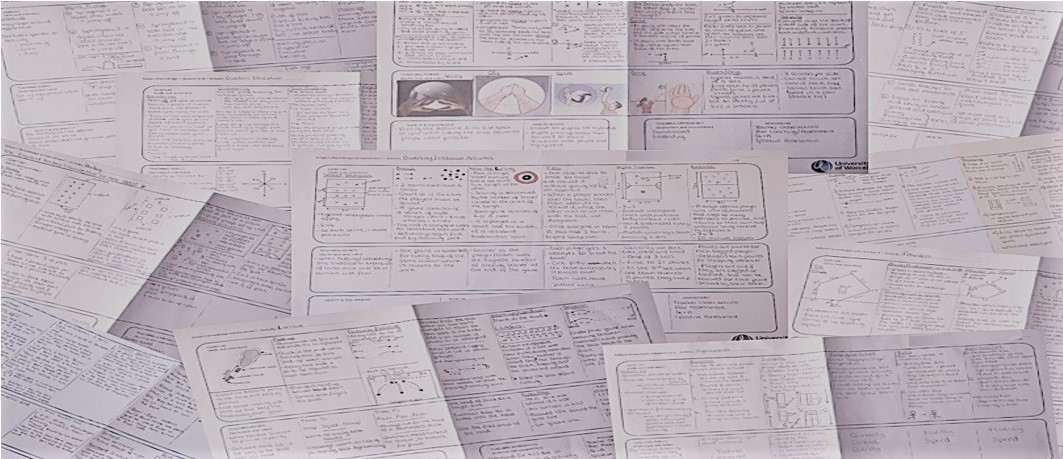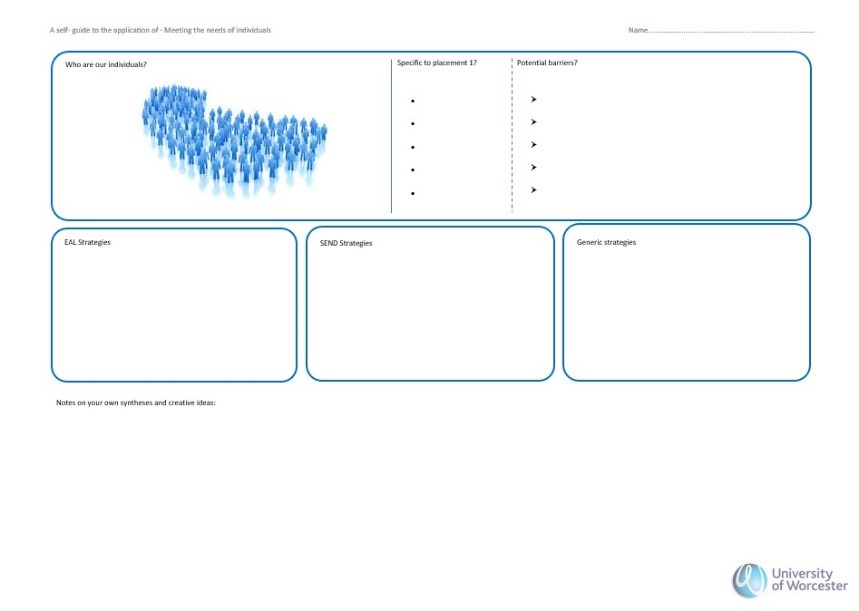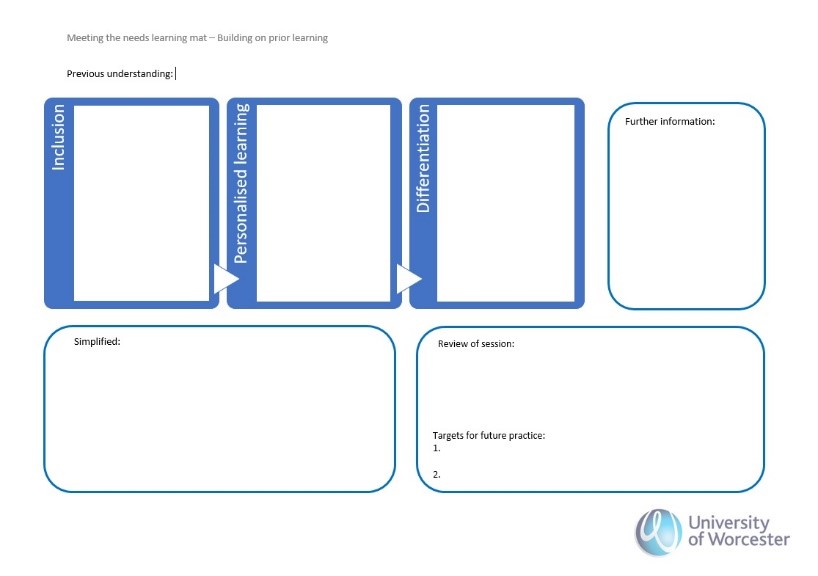
Kim Hibbert-Mayne (Secondary PGCE PE Tutor)
Learning mats have been a tool in primary and secondary education for many years now; used to guide pupils around a topic or remind them of key ideas, concepts or vocabulary during a lesson. They can be used to extend the learning during an independent task or for homework.
For the same reasons I have been using learning mats in my own sessions for teacher training in secondary education. In this context they are a tool for information gathering, thought organising and for increasing the level of engagement when it comes to students taking their own notes. I find that learning mats encourage students to decipher the information being transferred and summarise it to ‘fit’ into the relevant boxes. They provide a focus for what students should be looking out for during a lecture, provide a structure to their notes and a sense of authorship once the learning mat has been completed. Their work can then be filed into a collection of visually stimulating resources which are easy to find, review and amend.
I use learning mats for every major session, topic or activity and make them electronically available for those working on their own mobile technology devices. I have also found that those with dyslexia benefit from this structured approach to note taking and information organising.
While on placement trainee teachers can find revising unorganised notes, academic sources and professional documents quite overwhelming due to the time constraints and the pressures of planning and teaching. General feedback is that learning mats are quicker and easier to look back upon for information and have been the first point of reference for many of my students’ lesson plans, units of work and for their assignment planning.
One student said that ‘They are literally a life saver and I know that without them I wouldn’t have taken notes in a way which would benefit me in the long term!’
Tips for creating effective learning mats:

1. For sharing a lot of information give students an appropriate amount of titled boxes. I have found that the more boxes there are the better. Students have to pay more attention trying to catch the different pieces of information.

2. If you want to give students important pieces of advice or information, try to make lists, diagrams and bullet points which push information to the front. I often use prompting questions about the key points to extend the learning rather than tasks so as not to ‘stray’ from the key information.
3. Be creative with the format and shape of learning mats to excite and engage. Even very long lists can be turned into something attractive and thought provoking.


